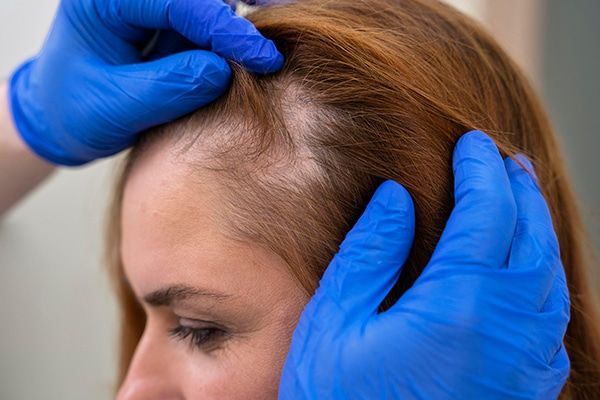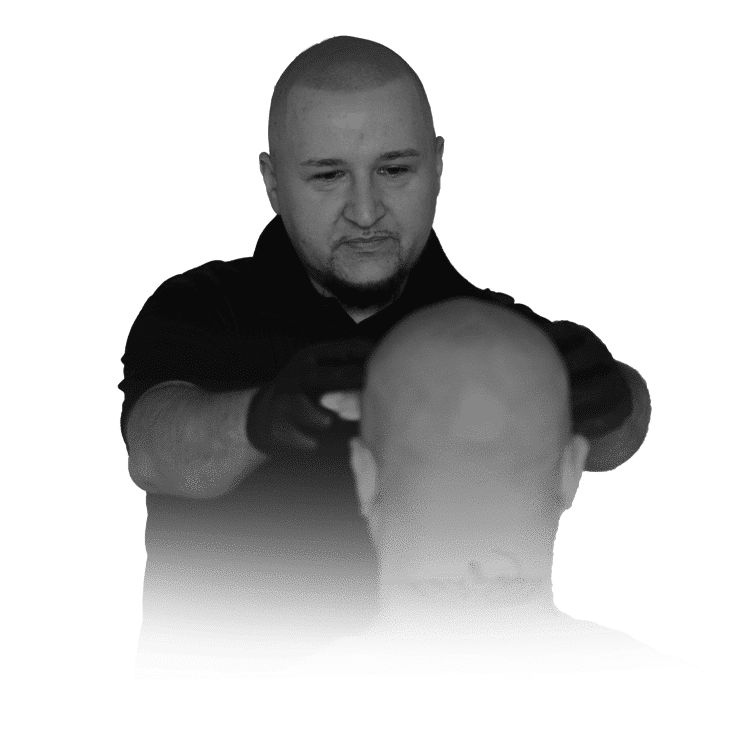SMP Training Program- Next class MAY 2024. WE NOW OFFER TATTOO LASER REMOVAL
Scalp Micropigmentation
What Causes Hair Loss?
Hair loss is the most familiar skin condition that affects both men and women. This persistent condition can become very stressful, as your self-esteem can be affected if you lose too much hair. In this article, we’ll give you the low-down on what causes hair loss, identify the most effective treatments for it, and talk about how to deal with hair loss and remain confident without looking in the mirror at all times.
If you are experiencing hair loss, you’re definitely not alone. According to statistics by the American Hair Loss Association, over 50% of Americans suffer some degree of hair loss by age 35. Male pattern baldness, one of the leading sources of hair loss, has been found in almost half of all men.
What are the causes of hair loss?
Hair loss can be triggered by a variety of medical conditions – including but not limited to male and female pattern hair loss. After reading this article, you’ll finally get the answer to your question what causes hair fall?
- Hereditary hair loss
Hair loss can be triggered by a number of reasons. The most common is hereditary hair loss, which is caused by genetics and is not preventable. Other common reasons for hair loss include age, alopecia areata, cancer treatment, childbirth, illness or other stressors, hormonal imbalance, and scalp infection.
Hereditary hair loss occurs when you inherit a genetic trait that makes it more likely for your body to shed hair than normal. Hereditary hair loss can occur at any age, but it’s most common in men who experience male pattern baldness after age 30. That’s the reason why hair loss is more experienced by men than women. It’s also common in women who have had multiple pregnancies. Also, the birth control pills play major role in triggering hair loss. Moreover, women who undergo hormone replacement therapies may face adverse effects in the shape of excessive hair loss.

- Alopecia areata
Alopecia areata is an autoimmune condition that only affects the scalp and causes patchy hair loss. It’s treatable with medication and sometimes other treatments like steroid injections into the scalp (topical immunotherapy) or phototherapy (light therapy). This autoimmune condition causes patches of baldness on the scalp and other parts of the body. It often starts from one spot and spreads but can come and go. The exact cause is unknown, but it’s thought to be related to a malfunctioning immune system. Luckily you can get alopecia hair loss treatment at internationally awarded SMP clinic in Melbourne with 100% recovery.
- Cancer treatment
Cancer treatment can cause temporary hair loss and permanent thinning or baldness, depending on the type of cancer being treated and the treatment used. Radiation therapy can cause permanent damage to the cells responsible for producing new hair growth; chemotherapy drugs may also affect these cells.
- Childbirth causes some women to experience
Many women experience postpartum hair loss after giving birth to their child due to hormone changes during pregnancy and childbirth. The hormonal changes during pregnancy affect the levels of estrogen and progesterone in your body, which regulate scalp oil production and stimulate new hair growth each month during ovulation. The increase in estrogen during pregnancy may also cause an increase in blood supply to the scalp area, leading to increased sensitivity in your scalp and increased shedding of old hairs.
- Hormonal imbalance
Hormonal imbalances can cause temporary or permanent hair loss. When this occurs in women, it’s called female pattern hair loss. This is more common in women than men because women have more estrogen in their bodies, and estrogen stimulates the growth of hair follicles. In men, testosterone stimulates hair growth.
- Androgenetic alopecia (common baldness):
Also known as male pattern baldness or female pattern baldness, this type of hair loss is caused by genes passed down from either parent. Hair loss is gradual and affects both men and women. It gets worse with age because hair follicles shrink over time. This hair loss occurs when follicles become sensitive to dihydrotestosterone (DHT), produced by the body’s adrenal glands, ovaries, or testes. As DHT enters the follicle, it shrinks it so that no new hairs can eventually grow there.
- Scalp infection
Seborrheic dermatitis and psoriasis can cause dry, flaky patches on your scalp, leading to itching and scratching. Scratching can cause permanent hair loss.

- Scarring alopecia
Scarring alopecia is an autoimmune disease where your immune system attacks your hair follicles, causing permanent scarring and hair loss.
- Telogen effluvium
This hair loss happens when you go through a stressful event like pregnancy, surgery, or extreme weight loss. Your body goes into the “resting phase,” and you shed more than average amounts of hair each day for up to six months after the stressful event ends.
- Thyroid disease
A gland in the neck called the thyroid produces hormones that regulate many functions in the body, including hair growth. When the thyroid gland doesn’t have enough thyroid hormone, it causes a condition called hypothyroidism (low thyroid). Hypothyroidism can affect hair growth, resulting in thinning and shedding some or all of your scalp hair.
- Poor diet
People sometimes develop bald patches on their scalps because they lack one of these nutrients in their diet. Hair loss caused by lacking these nutrients is usually temporary and won’t cause permanent baldness unless it’s severe and prolonged.
- Tight clothing can cause friction
People can develop hair loss where boots or socks frequently rub against their skin or wear tight clothing restricting blood supply to the scalp (e.g., helmets or caps). This hair loss may be temporary but could become permanent if friction continues over time.
- Medications
Certain medications, including chemotherapy drugs and corticosteroids used to treat asthma or arthritis, can cause temporary hair loss. Sometimes, the medication will stop working at a specific dose, and your doctor may need to change the dosage or switch medicine entirely. Hair loss from medication typically returns when you stop taking the drug or go off it completely. It also tends to be less severe than what happens with other forms of hair loss.
- Sexually transmitted infections (STIs)
Certain STIs, such as HPV (human papillomavirus), can cause red patches on your scalp that can develop into patches of permanent scarring alopecia. For example, if you have syphilis or genital herpes and have a weakened immune system, you might build alopecia at these sites. Other types of STIs that can cause alopecia include lice and scabies (a skin condition caused by an infestation with mites).
Conclusion
A variety of reasons can cause hair loss. Vigorous hair care procedures or dyes, hormonal imbalance, stress, and some other factors impact your hair. The first way to prevent hair loss is to stop using hairsprays and dyes until you resolve the problem of excessive hair loss. Treatments vary depending on the type of hair loss. The best solution is to find a specialist and follow his recommendations. The new technologies let restore lost hair without complications. If you do not want to lose your hair desperately and waste thousands of dollars on various unproven products, then have an authentic scalp micropigmentation service to get the best treatment and aftercare service.
To conclude, I can say that this problem cannot be solved in one day. Remember that you have to keep many essential things to preserve your health and beauty. I believe reading the information in this article will be an excellent start to solving your problem. Let us know if you have any additional questions; we will gladly help you.

Treatment

14 Ellaroo CircuitClyde NorthVictoria 3978Australia Privacy Policy
All Rights Reserved | Luxe Micro

Our Results




